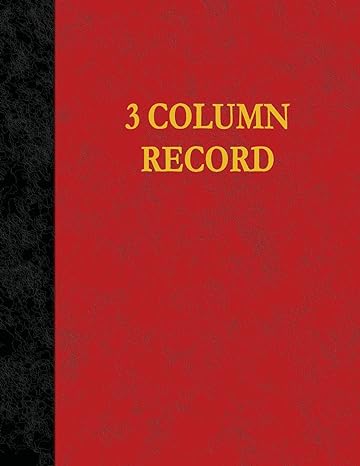Question
(((((((( I have an incomplete intermittent solution and I want a solution for the unknown parts )))))))) Profitability Analysis: ROA. ROA = Return on Asset=Net




(((((((( I have an incomplete intermittent solution and I want a solution for the unknown parts ))))))))
- Profitability Analysis:
- ROA.
- ROA = Return on Asset=Net Income / Total Asset
= -252811/1189349 = -21.26%
- Profit Margin.
Profit Margin = Net Income / sales.
= -252811/54052 = -467.72%
- Assets Turnover.
A/R Turnover = Net Sales on Account / Average Account Receivable
= 54052/0 = No Answer (as the receivable balance is Nil, the ratio cannot be calculated
- ROCE Analysis
- ROCE.
ROCE computation = net income preferred dividends / average common shareholders
Relating ROA to ROCE = return to creditors + return to proffered stockholder + ROCE
Disaggregation of ROCE =
ROCE = ROA x Adjusted Leverage
net income / A.common shareholders
= net income / A.total assets x net income to common stock / net income x average total assets / A.Shareholders equity
- CEL.
- CEL (Common earnings leverage) = Net income - Preferred dividends / Net income + ( 1 - ) x Interest expense + MI in earnings
- CSL.
CSL (Capital structure leverage) = Average total assets / Average common equity
- Risk Analysis:
Cash=0, marketable security= 442, receivable=0,
current liabilities= 34,39,123
- Quick Ratio (Acid Test Ratio).
Quick Ratio (Acid Test Ratio).
Quick ratio = cash + marteble security + recivable / current liabilities
= 0 + 442 + 0 / 34,39,123
= 0.0001
- Working capital Activity ratio.
Working capital activity ratio = A/R TURNOVER = net sales on account / Average account recievable
= 54,052 / (0+0)
= 54,052
COGS=(Opnning inventort + Purchse - End Inventory )
= ( 16902 + 47019 - 16902) = 47019
Inventory TURNOVER = cost of goods sold / Average inventory
= 47019 / (( 16902+16902)/2)
= 2.7819
A/P TURNOVER = PURCHASE ( cost of sales + ENG.inventort - BEG. Inventory ) / Average account payable
= 47019 / ((108389+104609)/2) = 0.4415
- Long-Term Solvency Risk- Debt Ratios:
- L.T. Debt Ratio.
L.T Debt ratio = long term debt / long term debt + shareholders equity
- Debt/Equity Ratio.
Debt/ equity ratio = long term debt / shareholders equity
- L.T. Debt/Asset Ratio.
L.T Debt to assets ratio = long term debt / total Assets
- Multiple Discriminant Analysis:
- Altman's Z-Score.
Altman's Z-Score = [ 1.2 x net working capital / total assets ] + [ 1.4 x retained earning / total assets ] + [ 3.3 x Earning before tax and interest / total assets ] + [ 0.6 x M.V Equity / Total Assets ] + [ 1 x Sales / Total Assets ]
ABRASIVES MANUFACTURING COMPANY SAOG Initial Un-audited Statement of profit or loss and other comprehensive income for the year ended 31" Dec 2018 2018 2017 54,052 50,262 Income Other operating income EXPENSES: General and administrative expenses Finance costs Total expenses (47,019) (239,270) (286,289) (94,088) (216,326) (260,152)) (232,237) (260,152) Loss before taxation Income tax expense Loss for the year Other comprehensive income: Change in fair value of available for sale Investments TOTAL COMPREHENSIVE LOSS FOR THE YEAR LOSS PER SHARE (20,574) 15,294 (252,811) (0/232) (244,858) (0/260) ABRASIVES MANUFACTURING COMPANY SAOG Statement of cash flows for the year ended 31 December 2018 Note 2018 RO 2017 RO Operating activities Net loss before taxation (232,237) (260,152) 5 16,184 (7,996) 239,270 16,184 (7,199) 216,326 16 15,221 (34,841) Adjustments for: Depreciation Dividend income Finance costs Operating loss/gain before changes in working capital Changes in working capital: Amounts due to related parties Inventories Accounts and other payables Net cash used in operations Finance costs paid NatCash used in operating activities (11,545) (3,780) 12,492 16,902 5,323 (124) (216,326) (216,450) 16 (239,270) (239,270) 7,996 7,199 Cash Flows From Investing Activities Dividend received Cash Flows From Financing Activities Net movement in Bank borrowings Net cash generated from financing activities 11 231,274 209,127 ' (124) 124 20 Net increase/(decrease) in cash and cash equivalents Cash and cash equivalents at beginning of year Cash and cash equivalents at end of year 20 The accompanying notes form part of these financial statementsStep by Step Solution
There are 3 Steps involved in it
Step: 1

Get Instant Access to Expert-Tailored Solutions
See step-by-step solutions with expert insights and AI powered tools for academic success
Step: 2

Step: 3

Ace Your Homework with AI
Get the answers you need in no time with our AI-driven, step-by-step assistance
Get Started


